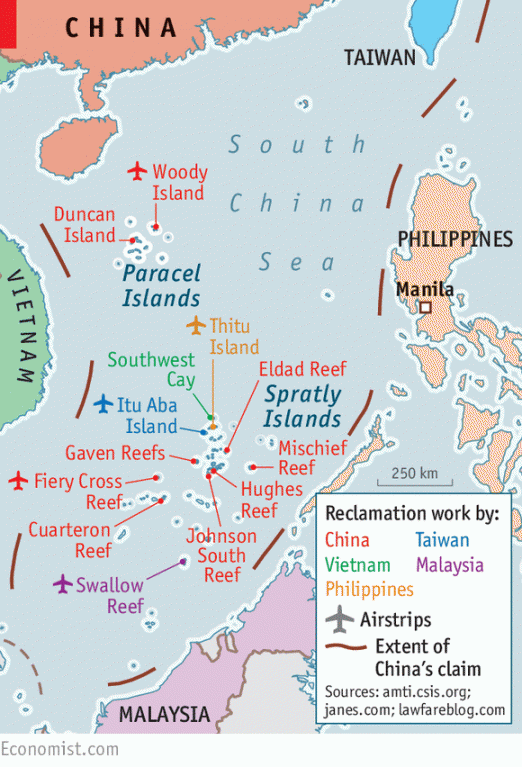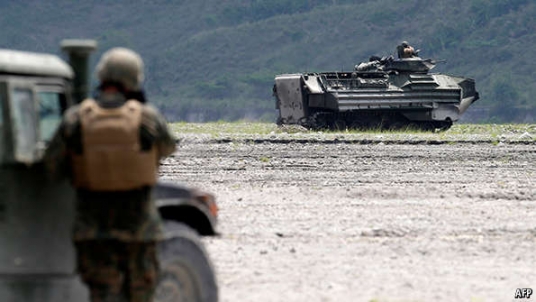Standing shoulder-to-wary-shoulder
Joint military exercises with America will not help the Philippines hold off China's encroachment
MONDAY will mark the beginning of the 31st Balikatan exercises: joint training between the American and Philippine armies, which also involves some Australian units. This is the first Balikatan (which means “shoulder-to-shoulder”) since the Philippines and America signed an “Enhanced Defence Co-operation Agreement” last year. It is to be the biggest for 15 years; 6,000 American troops will take part, more than twice as many as last year.

The stepped-up military co-operation is a response to Philippine worries about China’s intentions in the South China Sea. Like Taiwan, Vietnam, Malaysia and Brunei, the Philippines claims sovereignty over tiny islands and rocks in the sea that fall within the “nine-dash line” that China says marks its territory. All the claimants except Brunei have built on their claims. But China has recently embarked on a construction spreeunprecedented in its scale and speed. The cumulative effect has been to create startling new facts on the water.
To take just one example, new analysis of satellite images of Fiery Cross Reef in the Spratly archipelago shows that the feature, all but two rocks of which used to be submerged at high tide, is now three times bigger than the largest natural island in the Spratlys. It boasts 80 buildings and three cement plants. The port is being improved, with five new piers and several barges, including a crane barge. Construction of a 3,110 metre (1.9 miles) airstrip is estimated to be one-third complete. All of this seems to flout the spirit and probably the letter of an agreement China reached in 2002 with the ten-member Association of South-East Asian Nations (which includes Brunei, Malaysia, the Philippines and Vietnam) “to exercise self-restraint in the conduct of activities that would complicate or escalate disputes” in the South China Sea.
Advertisement
The Philippine president, Benigno Aquino, has repeatedly complained about Chinese expansionism and the dangers it brings. In a press interview on April 14th he said it “should engender fear for the rest of the world”. He gave warning of the risk of accidental escalation to “something beyond everybody's control”.
America is sympathetic. Barack Obama this month said countries such as the Philippines and Vietnam could not simply be “elbowed aside”. As with China’s dispute with Japan in the East China Sea, however, America takes no position on the sovereignty of the disputed land features. But whereas it has made clear its defence agreement with Japan covers the contentious islands, the Philippines enjoys no such guarantee in the Spratlys.
China, however, accuses America of stirring up trouble by emboldening the Philippines, in particular, to stand up to it. It was incensed, for example, when, in a visit as secretary of state in 2011, Hillary Clinton referred to the waters not as the South China Sea, but as the West Philippine Sea. And now, the Philippines foreign minister, Albert del Rosario, has said that America will be deploying “various advanced air and naval equipment” to the Philippines.
Like Balikatan, however, this will probably do little to deter China. It knows America is unlikely to risk a direct confrontation with it over specks in the South China Sea. China probably calculates—correctly, in all probability—that if tension between it and the Philippines mounts further, America will not be egging its ally on but restraining it.

No comments:
Post a Comment